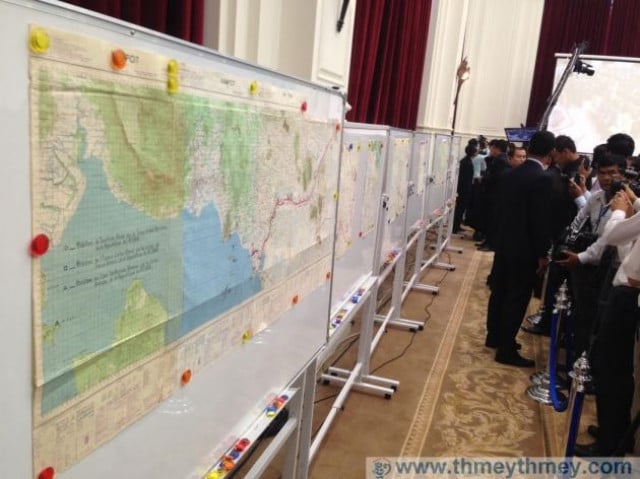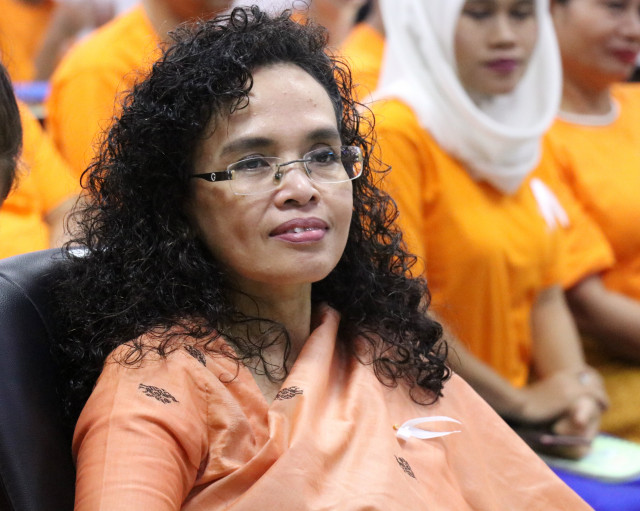Cambodia-Vietnam Border Demarcation 90 Percent Complete

- By Thun Senghong
- and Sam Sopich
- May 30, 2022 9:30 PM
Starting in 2006, the delimitation of the 1, 270-kilometer-long border brings up criticism over alleged land losses
PHNOM PENH – Cambodia and Vietnam demarcated another six percent of the borderline in five provinces, bringing the total demarcated border to 90 percent, according to the Cambodia Border Affairs Committee.
Vice-chairwoman of the committee Koy Pisey said the progress made in the demarcation line spanned Mondulkiri, Ratanakiri, Svay Rieng, Takeo and Tbong Khmum provinces.
Both border affairs committees will sign an additional 6 percent bilateral border agreement later this year, but she could not give a specific date.
“Cambodia is now waiting for the Vietnamese side to respond to prepare for the signing ceremony,” Pisey said.
The success of the demarcation borderline contributes to creating favorable conditions for socio-economic development along the border, encouraging trade and friendly exchanges between the people of the two countries, she added.
The announcement of a new land demarcation was made on May 12, in Washington D.C. During a meeting with Cambodians living in the United States and Canada, Prime Minister Hun Sen said that Cambodia and Vietnam had reached an agreement on an additional 6 percent of the border.
Cambodia shares a 1, 270-kilometer-long border with Vietnam and the two nations have been demarcating it since 2006. The latest achievement on the border demarcation occurred on Dec. 5, 2019, when King Norodom Sihamoni issued a Royal Decree promulgating the 2019 Cambodia-Vietnam Supplementary Border Treaty, which recognized the border landmarks along 84 percent of the border.
Despite both sides being committed to speeding up the completion of the remaining border posts, the demarcation is bringing up criticism on the Cambodian side, with alleged land losses benefiting Vietnam.
Such claims have been repeatedly rejected over the years by Hun Sen.
“If my government cuts the land to Vietnam, it wouldn’t need to spend years negotiating with Vietnam to find a way to draw a line and mark the border,” he said. “[Critics] say that Hun Sen sold lands, but where did Hun Sen sell them?”
Prominent unionist Rong Chhun said that, when looking at history, Kampuchea Krom, which refers to the lower Mekong delta region currently located in Vietnam, should be part of the Cambodian territory, as it used to be before the French protectorate.
The long-time unionist was jailed on July 31, 2020, for his comments regarding land discrepancies in the demarcation of the Cambodia-Vietnam border, before being freed from prison on probation on Nov. 12, 2021.
Rong Chhun said that plots of land have been repeatedly transferred to Vietnam, citing the example of National Assembly President Heng Samrin's childhood home, in Tbong Khmum province, Ponhea Kraek district, which is now technically in Vietnam.
He also pointed out that some places in Takeo province have lost between 500 and 1,200 meters of land with the new border demarcations, clearly indicating that Cambodia is losing territory.
Any exchange of land is considered treason, but on the contrary, it is exchanged without a law, he said.
“Posting a border is a good thing, but we need to be clear between the two countries. We only want the demarcation to be accurate if we notice that the demarcation is irregular,” he said.
Chhun added that in the past, when he went down to observe the border demarcation process, authorities always put obstacles not to allow him getting close to the inspection area.
“It seems that there is no transparency. Recently, the prime minister openly said anyone who wants to go and see, can go, but it is not clear whether or not I would be allowed to access the area if I want to,” he said.















